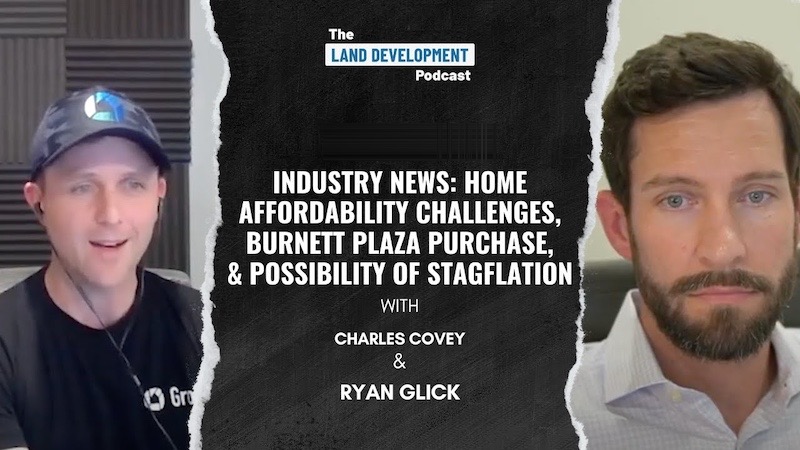Industry News: Home Affordability Challenges, Burnett Plaza Purchase, & Possibility of Stagflation

Episode Overview
In this episode of the Land Development Podcast, host Ryan Glick introduces a new format that will alternate between guest interviews and discussions on current events in the real estate industry. Joining Ryan is Charles Covey, an industry expert who has previously appeared on the show. Together, they dive into some of the most pressing headlines affecting the real estate market today.
First, they explore an article from the National Association of Home Builders about housing affordability. With 66.6 million households unable to afford a $250,000 home, Charles and Ryan discuss the underlying issues, including the rising costs of housing and income disparities. Charles sheds light on how smaller, more affordable homes might be the solution and shares insights from his experience in building affordable rentals.
Next, they turn their attention to a story about Fort Worth’s tallest building being sold for just $12.3 million at foreclosure auction. Charles provides his perspective on why this might be an anomaly and what it could mean for the future of office spaces. They discuss the challenges of converting office buildings into residential spaces and the potential impacts of shifting work patterns post-COVID.
Finally, they dive into an article discussing the potential for 1970s-style stagflation in the current economy. Ryan and Charles examine the factors that could lead to stagflation, its implications for the real estate market, and why today’s economic environment differs from the 1970s. Charles emphasizes the importance of understanding economic trends and how they influence real estate investments.
Guest Details
Articles From Episode
- National Association of Home Builders: Affordability Pyramid Shows 66.6 Million Households Cannot Buy a $250,000 Home
- FOX Business: Fort Worth’s Tallest Building Sells For Just $12.3M At Auction In Stunning Price Drop
- MarketWatch: The economy could be heading toward 1970s-style stagflation. What it means for the stock market
